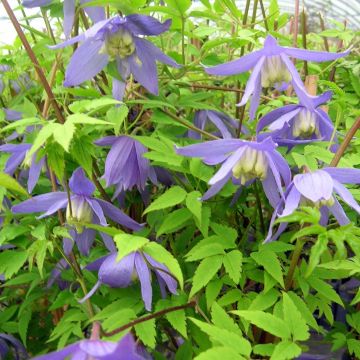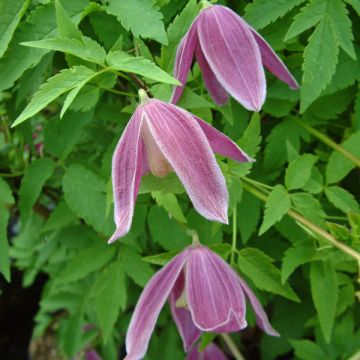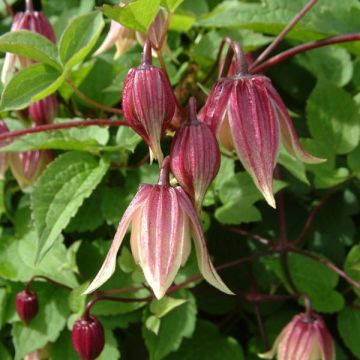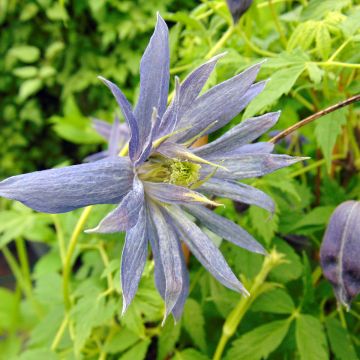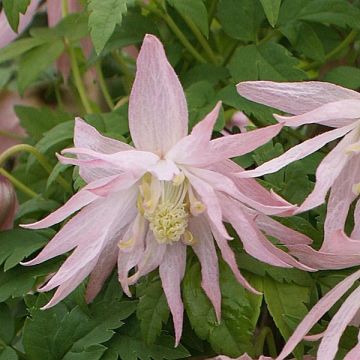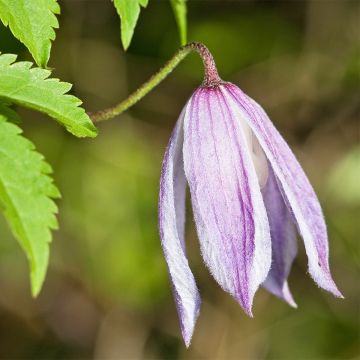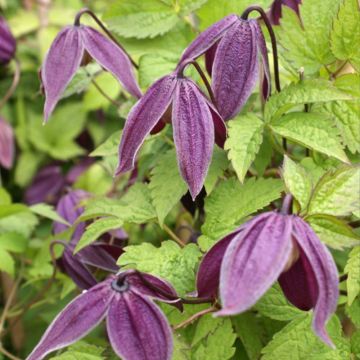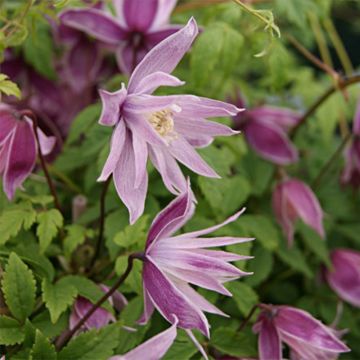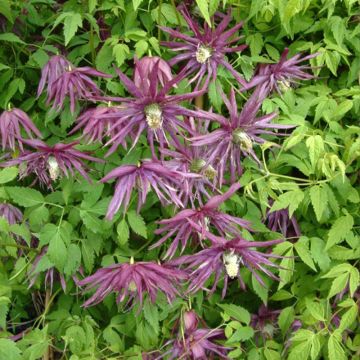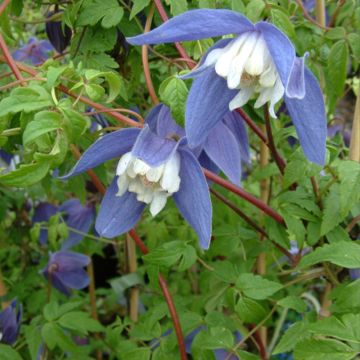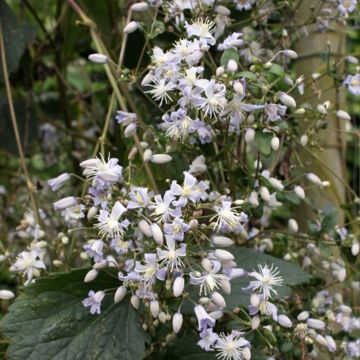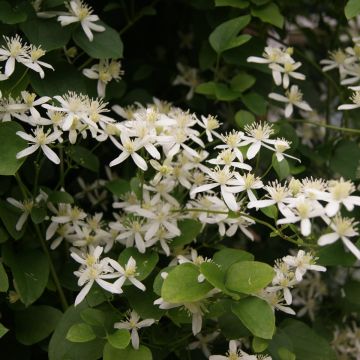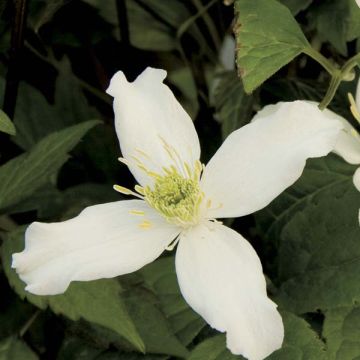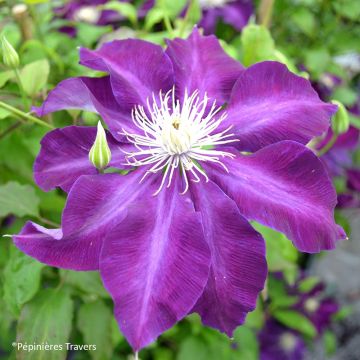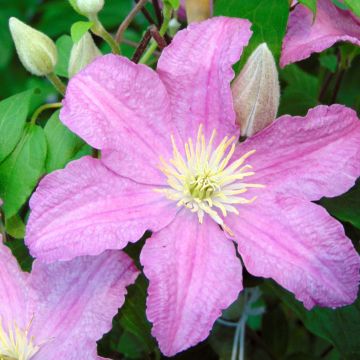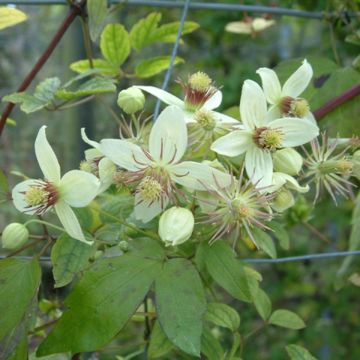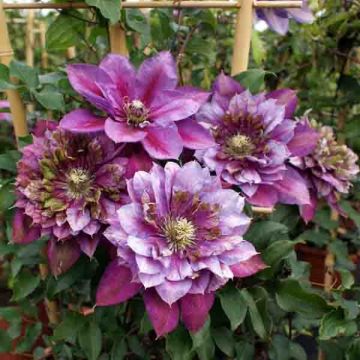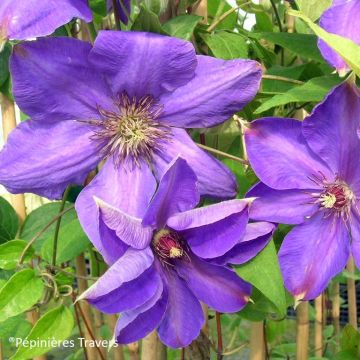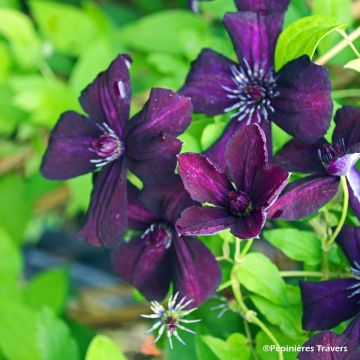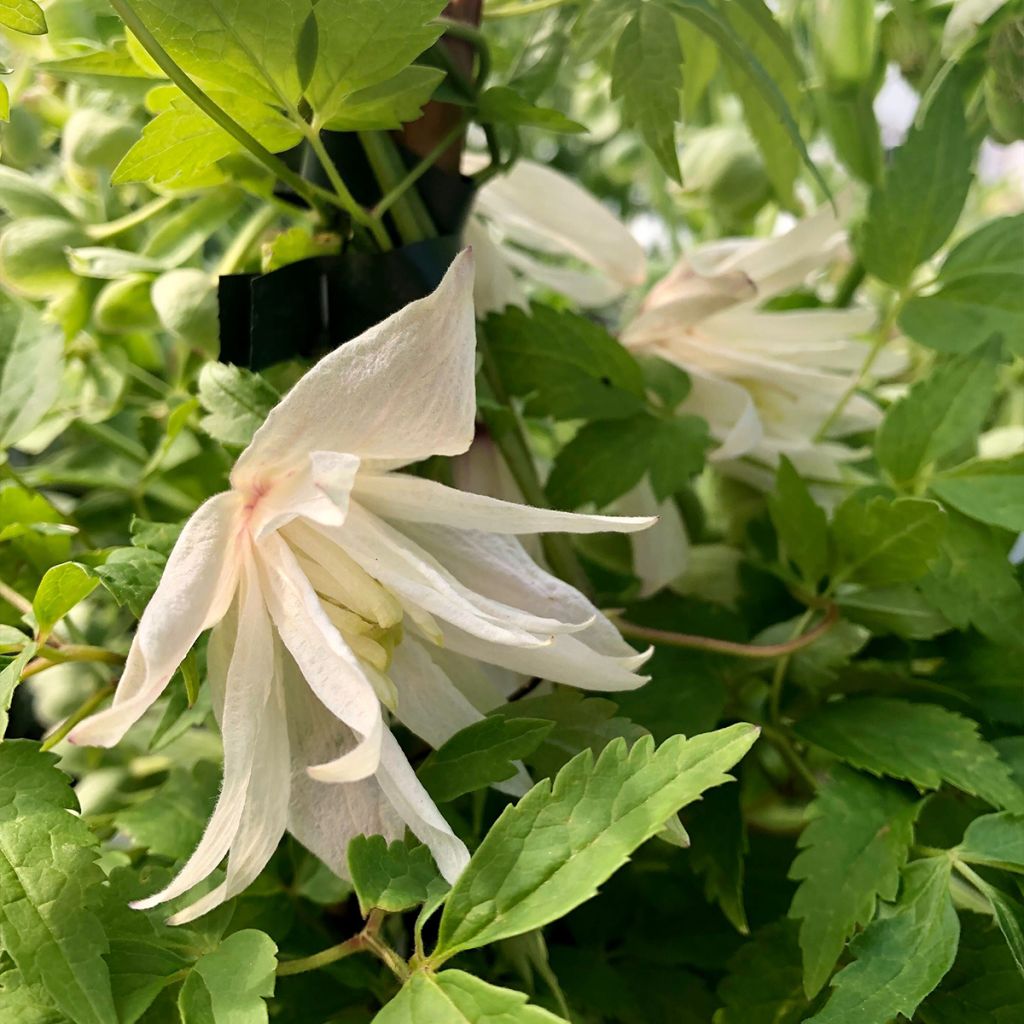

Clematis atragene alpina Plena
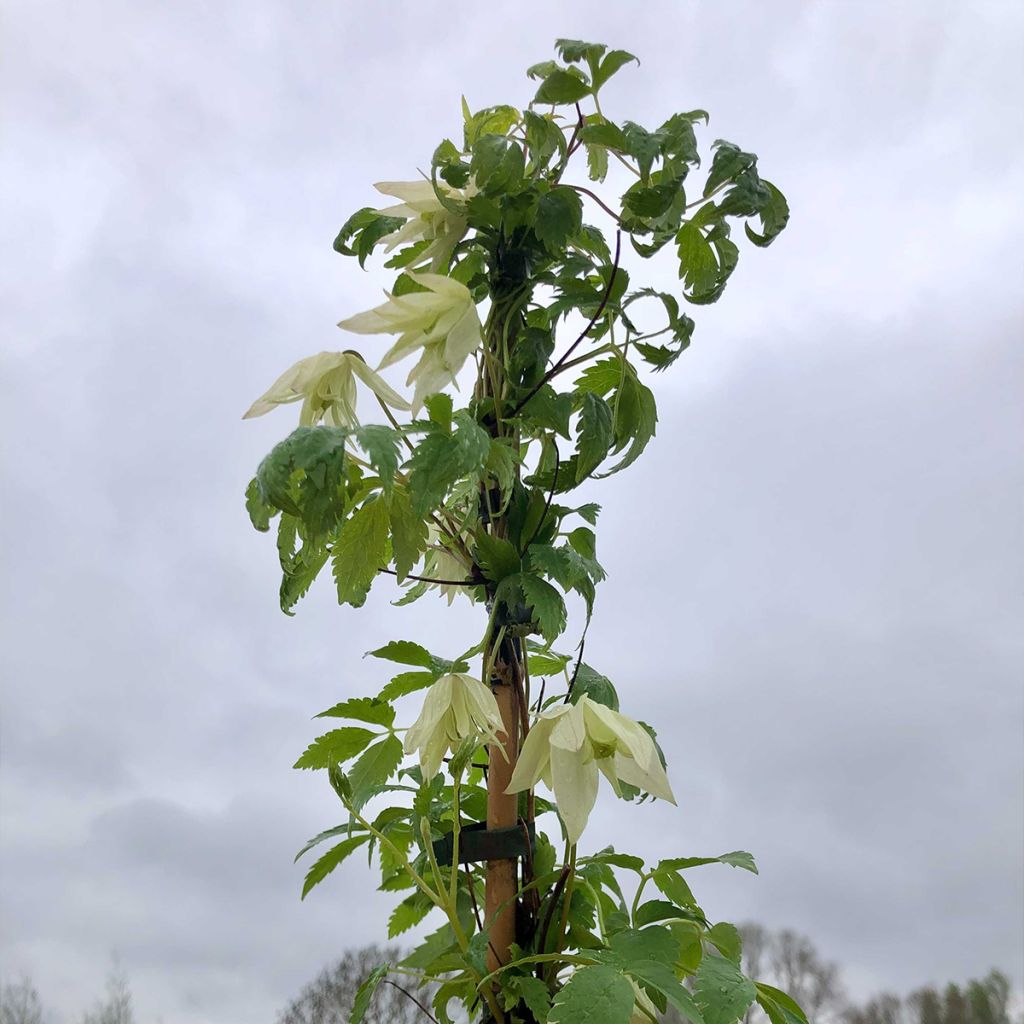

Clematis atragene alpina Plena
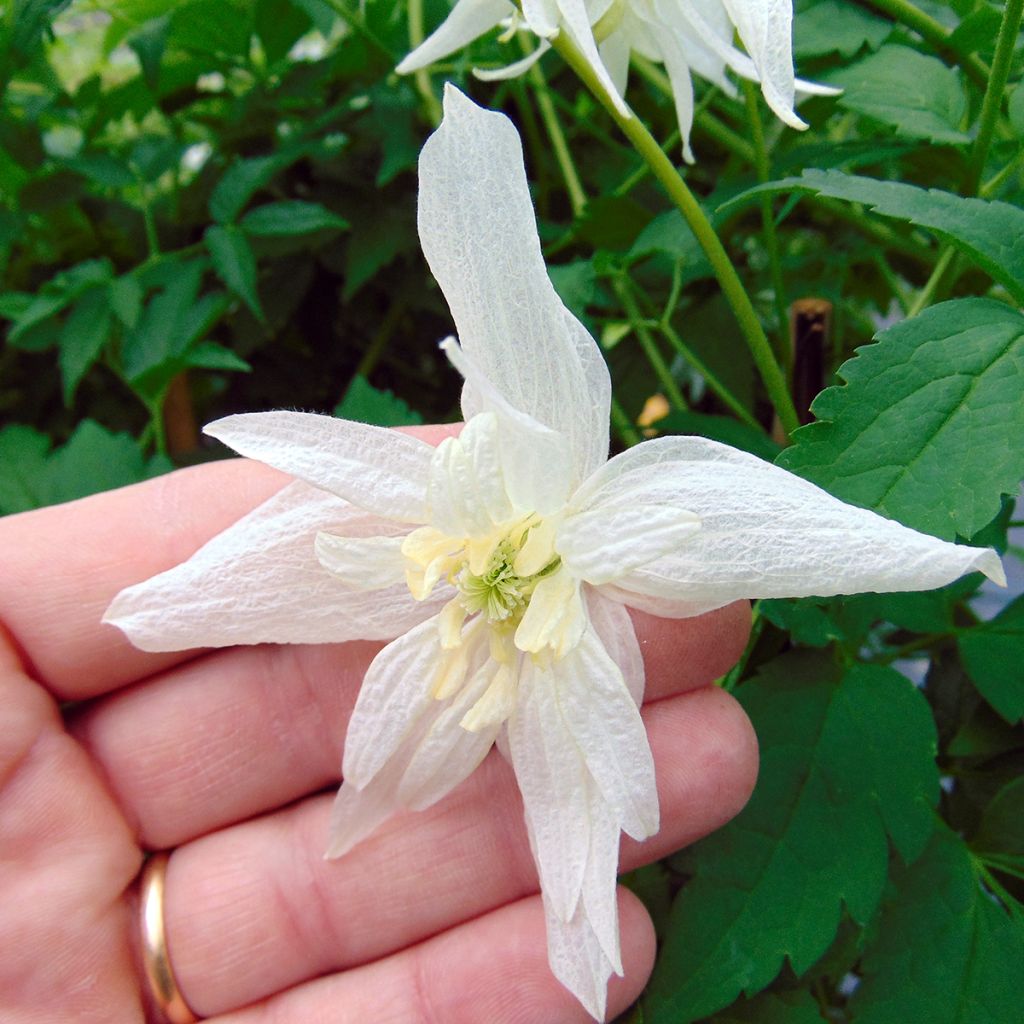

Clematis atragene alpina Plena
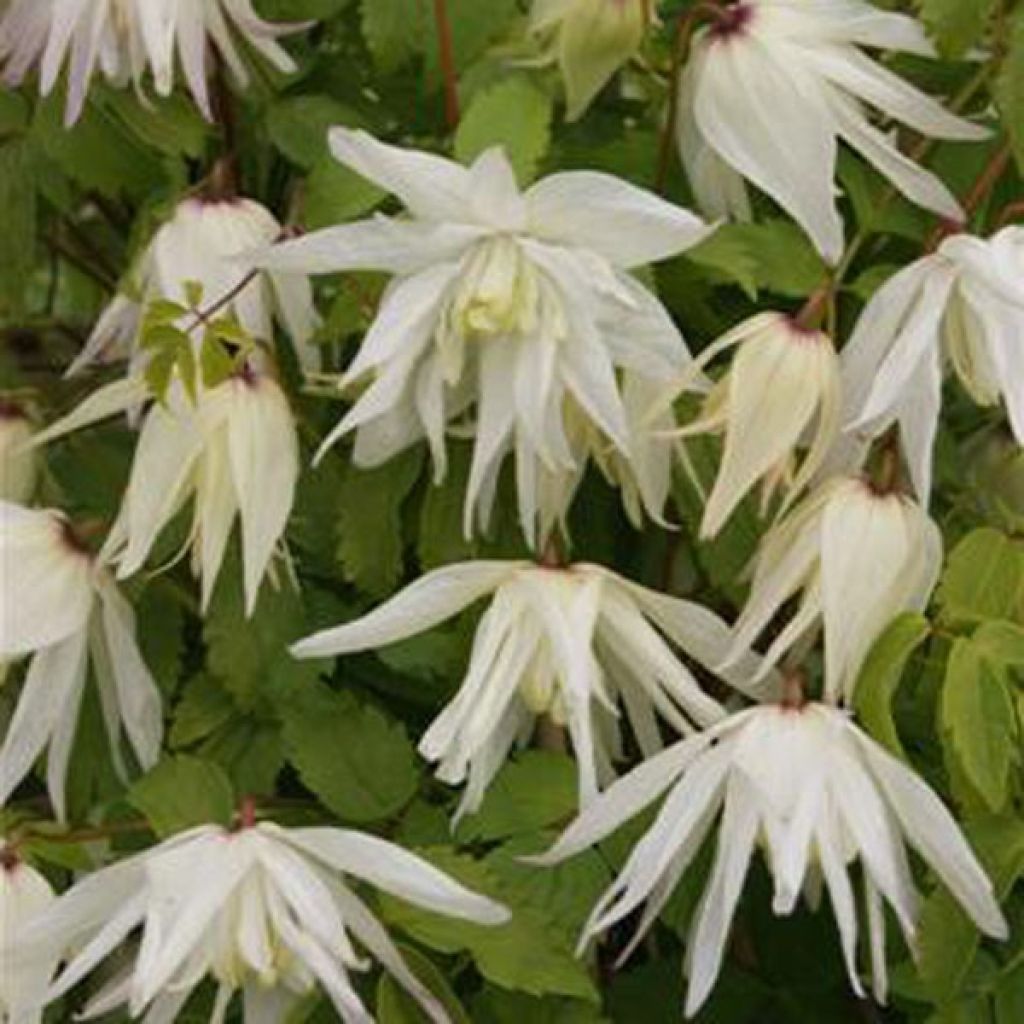

Clematis atragene alpina Plena
Clematis atragene alpina Plena
Clematis atragene alpina Plena
Atragene Clematis, Early-Flowering Clematis
This item cannot be shipped to the selected country
Delivery charge from €5.90
More information
Schedule delivery date,
and select date in basket
This plant carries a 6 months recovery warranty
More information
We guarantee the quality of our plants for a full growing cycle, and will replace at our expense any plant that fails to recover under normal climatic and planting conditions.
From €5.90 for pickup delivery and €6.90 for home delivery
Express home delivery from €8.90.
Does this plant fit my garden?
Set up your Plantfit profile →
Description
The Clematis alpina 'Albina Plena' is a beautiful form with double white flowers of the Alpine Clematis, appreciated for its early and generous flowering as well as its hardiness. It is a sturdy climbing plant of medium size that thrives on old walls, trellises, fences, and even in trees. Indeed, its numerous tendrils allow it to climb everywhere! Fantastic when paired with the blue variety 'Francis Rivis!'
The Clematis belongs to the Ranunculaceae family. The genus includes about 30 species of herbaceous perennials with woody roots and semi-woody, evergreen or deciduous climbing plants. They are found in both hemispheres, particularly in Europe, the Himalayas, China, Australia, and North and Central America. The 'Albina Plena' Clematis comes from the Clematis alpina (Alpine Clematis), native to the French, Swiss, Italian, and Austrian Alps. It is also found in Siberia. It belongs to Group 1 (early-flowering clematis) of the Clematis, which has 3 groups. It is a semi-woody, creeping or climbing perennial plant that reaches 2.50 m (8ft) to 3 m (10ft) in height, with a spread of 1 m (3ft). The groups are defined based on cultivation requirements.
This Albina Plena Clematis bears beautiful double campanulate flowers measuring 5-6 cm (2in) in diameter, at the axils of the leaves, on the previous year's shoots. They bloom from the end of March if the weather is mild. Generally, the flowering period extends from April to June. The flowers are solitary and do not have petals, but slightly twisted tepals. In the center of the corolla are white staminodes (sterile stamens arranged in a small cup), surrounding cream-white stamens. The flowering is followed by decorative plume-like fruits in silver-gray. The leaves, which are quite dark green, sometimes opposite, sometimes alternate, and glabrous, are ternate with irregularly toothed edges. They are deciduous, meaning they appear in spring and fall in autumn. This clematis clings to supports or host plants by means of petioles transformed into tendrils.
Combine your clematis with your climbing roses or your favorite shrubs by choosing simultaneous or staggered flowering. You can let the Alpine clematis spread lazily on the ground, as they form original and charming ground covers.
The name "clematis" comes from the Greek "klema" = vine shoot, because its old stems have a woody and twisted appearance with cork exfoliations. About half a dozen spontaneous clematis species grow in France (not counting those cultivated in gardens). Among them are the Alpine Clematis (or Alpine Atragene), the fragrant clematis (Clematis flammula), and the hedge clematis (Clematis vitalba).
Tips: Avoid excessive fertilization that stimulates foliage growth at the expense of flowers. Do not mulch to avoid excessive humidity that promotes wilt disease.
Report an error about the product description
Clematis atragene alpina Plena in pictures


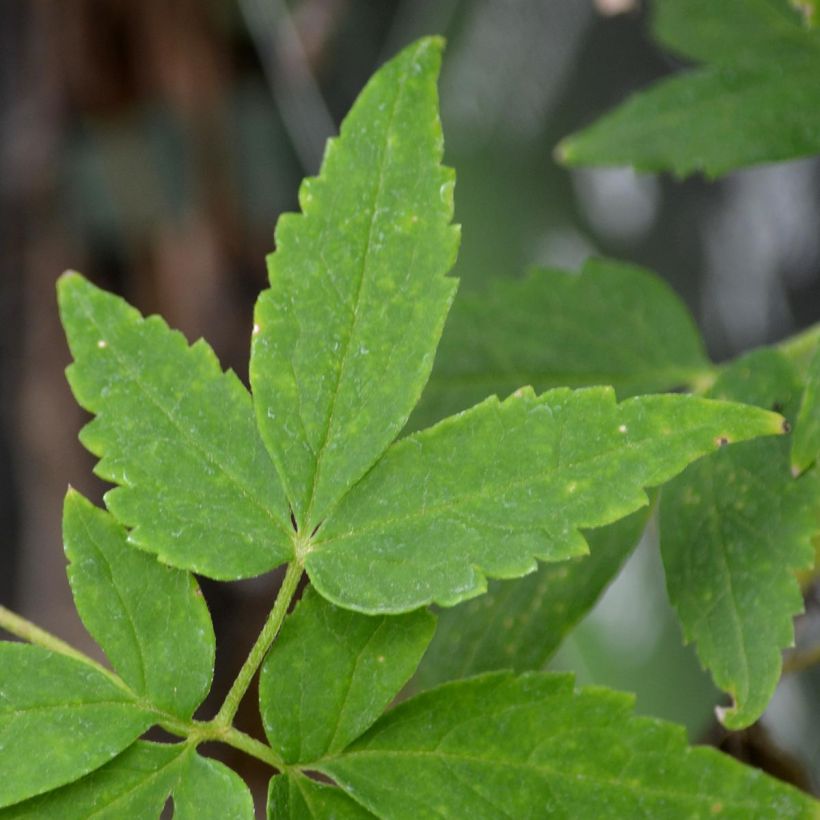

Plant habit
Flowering
Foliage
Botanical data
Clematis
atragene
alpina Plena
Ranunculaceae
Atragene Clematis, Early-Flowering Clematis
Cultivar or hybrid
Other Clematis Atragene
Planting and care
The 'Albina Plena' Alpine Clematis is planted in spring or autumn, 5cm (2in) deep, by placing the root ball flat on the soil instead of vertically as usual. The head in the sun and the base in the shade. Cover the base with a small mound of soil to encourage new shoots. After planting, prune the shoots to 30cm (12in) from the base, above a pair of buds. Train them loosely to help the plant attach itself later. Pruning afterwards will involve removing dead or damaged shoots after flowering.
Planting period
Intended location
Care
-
, onOrder confirmed
Reply from on Promesse de fleurs
Clematis
Haven't found what you were looking for?
Hardiness is the lowest winter temperature a plant can endure without suffering serious damage or even dying. However, hardiness is affected by location (a sheltered area, such as a patio), protection (winter cover) and soil type (hardiness is improved by well-drained soil).

Photo Sharing Terms & Conditions
In order to encourage gardeners to interact and share their experiences, Promesse de fleurs offers various media enabling content to be uploaded onto its Site - in particular via the ‘Photo sharing’ module.
The User agrees to refrain from:
- Posting any content that is illegal, prejudicial, insulting, racist, inciteful to hatred, revisionist, contrary to public decency, that infringes on privacy or on the privacy rights of third parties, in particular the publicity rights of persons and goods, intellectual property rights, or the right to privacy.
- Submitting content on behalf of a third party;
- Impersonate the identity of a third party and/or publish any personal information about a third party;
In general, the User undertakes to refrain from any unethical behaviour.
All Content (in particular text, comments, files, images, photos, videos, creative works, etc.), which may be subject to property or intellectual property rights, image or other private rights, shall remain the property of the User, subject to the limited rights granted by the terms of the licence granted by Promesse de fleurs as stated below. Users are at liberty to publish or not to publish such Content on the Site, notably via the ‘Photo Sharing’ facility, and accept that this Content shall be made public and freely accessible, notably on the Internet.
Users further acknowledge, undertake to have ,and guarantee that they hold all necessary rights and permissions to publish such material on the Site, in particular with regard to the legislation in force pertaining to any privacy, property, intellectual property, image, or contractual rights, or rights of any other nature. By publishing such Content on the Site, Users acknowledge accepting full liability as publishers of the Content within the meaning of the law, and grant Promesse de fleurs, free of charge, an inclusive, worldwide licence for the said Content for the entire duration of its publication, including all reproduction, representation, up/downloading, displaying, performing, transmission, and storage rights.
Users also grant permission for their name to be linked to the Content and accept that this link may not always be made available.
By engaging in posting material, Users consent to their Content becoming automatically accessible on the Internet, in particular on other sites and/or blogs and/or web pages of the Promesse de fleurs site, including in particular social pages and the Promesse de fleurs catalogue.
Users may secure the removal of entrusted content free of charge by issuing a simple request via our contact form.
The flowering period indicated on our website applies to countries and regions located in USDA zone 8 (France, the United Kingdom, Ireland, the Netherlands, etc.)
It will vary according to where you live:
- In zones 9 to 10 (Italy, Spain, Greece, etc.), flowering will occur about 2 to 4 weeks earlier.
- In zones 6 to 7 (Germany, Poland, Slovenia, and lower mountainous regions), flowering will be delayed by 2 to 3 weeks.
- In zone 5 (Central Europe, Scandinavia), blooming will be delayed by 3 to 5 weeks.
In temperate climates, pruning of spring-flowering shrubs (forsythia, spireas, etc.) should be done just after flowering.
Pruning of summer-flowering shrubs (Indian Lilac, Perovskia, etc.) can be done in winter or spring.
In cold regions as well as with frost-sensitive plants, avoid pruning too early when severe frosts may still occur.
The planting period indicated on our website applies to countries and regions located in USDA zone 8 (France, United Kingdom, Ireland, Netherlands).
It will vary according to where you live:
- In Mediterranean zones (Marseille, Madrid, Milan, etc.), autumn and winter are the best planting periods.
- In continental zones (Strasbourg, Munich, Vienna, etc.), delay planting by 2 to 3 weeks in spring and bring it forward by 2 to 4 weeks in autumn.
- In mountainous regions (the Alps, Pyrenees, Carpathians, etc.), it is best to plant in late spring (May-June) or late summer (August-September).
The harvesting period indicated on our website applies to countries and regions in USDA zone 8 (France, England, Ireland, the Netherlands).
In colder areas (Scandinavia, Poland, Austria...) fruit and vegetable harvests are likely to be delayed by 3-4 weeks.
In warmer areas (Italy, Spain, Greece, etc.), harvesting will probably take place earlier, depending on weather conditions.
The sowing periods indicated on our website apply to countries and regions within USDA Zone 8 (France, UK, Ireland, Netherlands).
In colder areas (Scandinavia, Poland, Austria...), delay any outdoor sowing by 3-4 weeks, or sow under glass.
In warmer climes (Italy, Spain, Greece, etc.), bring outdoor sowing forward by a few weeks.

































